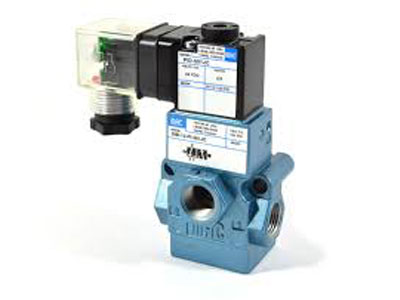Key Takeaway
The three main types of relief valves are spring-loaded relief valves, pilot-operated relief valves, and balanced bellows relief valves. Spring-loaded relief valves use a spring to control the valve opening, providing reliable pressure relief.
Pilot-operated relief valves use a pilot valve to control the main valve, offering precise pressure control. Balanced bellows relief valves are designed to minimize the effects of backpressure, ensuring reliable operation in various conditions.
Overview of Relief Valve Types
Relief valves are available in various types, each suited for specific applications. The main types include spring-loaded, pilot-operated, and balanced bellows relief valves.
Spring-loaded relief valves are simple and reliable, providing direct response to pressure changes. Pilot-operated valves offer precise control and are ideal for high-pressure systems.
Balanced bellows relief valves handle backpressure effectively, ensuring consistent performance. Understanding these types is crucial for selecting the right valve for specific system requirements.

Key Differences Between Types
Relief valves (RVs) come in different designs to cater to the unique needs of various industrial applications. The most common types are spring-loaded and pilot-operated relief valves, each serving distinct functions. Spring-loaded RVs are simpler and more widely used, primarily because of their ease of operation and affordability. The spring tension determines when the valve will open in response to overpressure, making them suitable for systems with relatively stable conditions.
In contrast, pilot-operated RVs offer more precision. These valves use a pilot valve to control the opening and closing of the main valve, allowing for finer control of pressure regulation. Pilot-operated valves are more suitable for systems that require a higher degree of accuracy, such as in chemical plants or oil refineries, where precise pressure control is essential for maintaining safe and efficient operations.
Another key difference is the balanced-bellows RV, which is designed to handle high temperatures and varying pressures. The bellows mechanism helps to maintain constant pressure control even under extreme conditions. This type of RV is often used in power plants and refineries, where high-pressure and high-temperature environments demand advanced valve technology. Understanding the specific application needs helps to choose the most appropriate RV type.
You May Like to Read
Applications for Each Type
Pressure Relief Valves (PRVs) come in several different types, each designed to suit specific application needs. The most common types of PRVs include spring-loaded PRVs, pilot-operated PRVs, and bellows-operated PRVs. Each type has unique features that make it more suited for particular industries and operating conditions.
Spring-loaded PRVs are the most commonly used type in applications where pressure fluctuations are not extreme. These PRVs are reliable, cost-effective, and easy to maintain. They are typically used in industries such as HVAC, water treatment, and low-pressure applications. The spring mechanism ensures that the valve opens when the pressure exceeds the set point and closes once the pressure returns to safe levels. This makes them ideal for systems that require basic pressure relief but do not experience significant or rapid pressure changes.
Pilot-operated PRVs, on the other hand, are used in systems that experience higher pressure levels or more frequent pressure changes. These valves are equipped with a pilot valve that helps control the opening and closing mechanism. The pilot-operated PRV allows for more precise control over pressure relief, making them ideal for oil and gas or chemical processing industries where maintaining stable pressure is critical. These valves are more complex than spring-loaded valves and are typically used in applications where overpressure could lead to severe safety hazards.
Advantages and Disadvantages
Relief Valves (RVs) provide significant advantages in safeguarding systems from overpressure, protecting equipment, and ensuring operational safety. One of the key benefits of RVs is their ability to respond quickly to pressure changes, automatically releasing excess pressure to prevent damage to equipment. This makes them crucial in applications where pressure fluctuations are common, such as in power generation, chemical processing, and HVAC systems. Additionally, RVs help extend the lifespan of expensive machinery and prevent costly repairs by minimizing the risk of overpressurization.
However, RVs also have some disadvantages. They are designed to open and release pressure, which can result in the loss of fluid or gas, leading to energy inefficiency and potential system downtime. Furthermore, if not properly maintained or calibrated, RVs may fail to operate as expected, which could lead to system failure. The pressure setpoint may also be a limiting factor, and if the valve is set too low or too high, it could compromise system functionality or safety.
Despite these drawbacks, the benefits of using RVs outweigh the disadvantages, especially when regular maintenance and proper calibration are ensured. They remain indispensable in any system where pressure management is critical for operational safety and equipment longevity.
Choosing the Right Relief Valve Type
Choosing the right relief valve type involves understanding your system’s specific requirements. Factors such as operating pressure, temperature, and the type of fluid being handled play a crucial role in valve selection.
Materials also matter; for corrosive environments, valves made from stainless steel or other corrosion-resistant materials are recommended. Additionally, ensure the valve meets industry standards, such as ASME or API, to guarantee safety and performance.
Finally, consider the design and installation requirements, as these impact the valve’s functionality and ease of maintenance. Selecting the appropriate valve ensures long-term stability and efficient system operation.
Conclusion
Relief valves are categorized into three main types: spring-loaded, pilot-operated, and balanced bellows. Spring-loaded relief valves are widely used for their simplicity and reliability, making them suitable for various applications.
Pilot-operated relief valves offer precise control and are ideal for high-pressure systems. Balanced bellows relief valves are designed to handle backpressure effectively, ensuring consistent performance. Understanding these types is crucial for selecting the right relief valve for specific needs.
